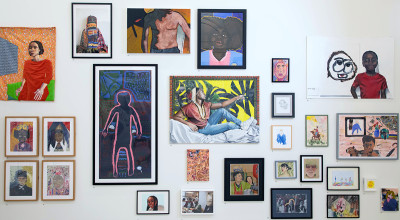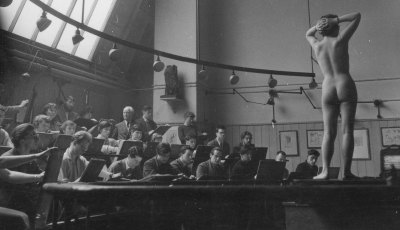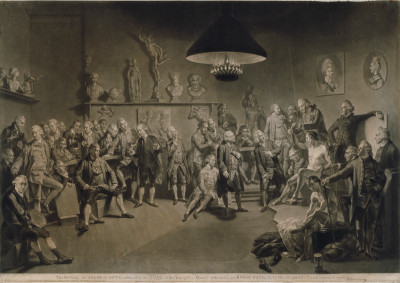Arts education… What’s next?
Arts education… What’s next?
A former attRAct student on her experiences
By Sadie Stephenson
Published 1 May 2014
Picture the scene: you’re an A-level art student, approaching the end of your course and considering your educational future. What comes next?
-
With increased financial pressure on students, the decision of which degree to take, which university to attend – whether to go into further study at all – can feel daunting.
One of the best things about attRAct (The RA’s programme for A-level students), is its ability to create stimulating and high quality events that still manage to remain relevant and attainable to me and my fellow A-level students, at a time in our lives which is sometimes difficult and often confusing. Plus, just being at the RA is inspiring to a young art student!
A vital part of attRAct is to offer support and guidance for what comes next after school. In a recent open forum led by a panel of former attRAct students who are presently studying for foundation and undergraduate degrees, as well as a foundation tutor from Kingston University, we discussed options for the future, mostly focusing on further and higher art and design education. The main emphasis was on art and design foundation courses (these are one-year further education courses, usually taken after A-Level study and prior to degree, and are free for under 19 year olds). Are foundation courses worth doing? And what is their place in relation to school education, A-levels and university, BA and MA?
-
It was exhilarating to hear the breadth of knowledge, advice and the variety of personal accounts that came from the panel. The discussion was interspersed with questions from the audience of current attRAct students, invited school peers and art teachers. This created an organic discussion led by the students’ thoughts and questions.
So, what are the benefits of an art foundation course? At Kingston University, tutor Henrietta Swift explained their foundation’s aims to increase knowledge and prepare students for art and design courses at degree level – most specifically the final part of the course where your personal practice is explored by research and aided by lectures and research, guided by subject tutors. Students are offered a diagnostic period at the beginning of the course where experimentation is encouraged: at Kingston this includes opportunities to study communication, three-dimensional design, fine art and fashion prior to selecting one option to specialise in for the rest of the year. The panel encouraged open-mindedness in this selection process as many students change their specialism during foundation.
The panellists spoke of the maturity they noticed in themselves and their art practice as their work became independent. Those now on BA courses felt foundation had anchored and prepared them well, especially their time management skills. Positivity and perseverance were encouraged, especially in relation to ‘knock backs’. Not all panellists gained places on their first choice foundation course and although disappointed, they remained positive when embarking on their second or third choices, resulting in a successful experience.
Foundation can also offer a liberating environment. One student explained that they felt able to work on their own ideas without the constraints of a brief – introducing the independent study style of BA, and freeing them from the constraints of the A-level curriculum, which allowed them to explore their own practice more thoroughly.
Coming away from the event, what was learnt? When I was applying to foundation, for many students it was all too easy to get wrapped up in the reputation of an institution, which was the best, most famous and the most prestigious. From listening to the panellists speak, the best foundation experiences came from those that weren’t swayed by the varying answers to those questions, but by picking the places they felt they could be at their most creative, with an atmosphere and environment that suited them. Students should consider what suits them best, in terms of the course size, facilities, access to tutors, the degree of structure and whether there are briefs or not, as foundations do vary on this. What also came out was that foundation is a time to be playful and you have the chance to take a risk and try something new. It’s all part of growing up on your journey of discovery about yourself and the world of art!
Learn more about attRAct
Read more about the changes in interest former attRAct student Jenny Zielinska has noticed in her current work on the attRAct programme.Sadie Stephenson was part of the attRAct programme from 2011-2012.




